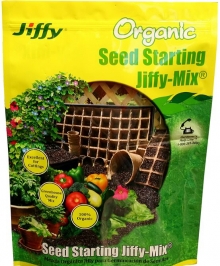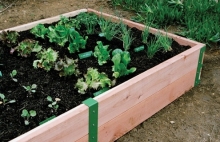Seed Starting Basics

Quality seed starting soil is a must.
Newly sprouted seeds need plenty of light and moist, but not waterlogged, soil.

Transplant your seedlings after they have been properly acclimated.
Sunday, April 3 | Gardening Info
Starting your own plants from seed is a fun, cost effective way to get a jump on your gardening. Many unique hybrids and heirlooms are only available as seeds – starting your own opens up a whole new world of varieties.
Essential Equipment:
Seed Starting Soil: Sterile media specially formulated for seed germination will greatly improve your seedlings’ survival rate.
Cell or Plug Flats: Separating your seedlings into their own cells will help slow the spread of fungus or disease that may develop after germination.
Humidity Dome: Helps keep humidity high at the soil surface to soften the seed coat and initiate germination.
Seeds: Choose fresh, quality seeds. While seeds can be stored, germination rates drop with each passing season.
Timing Your Seeds:
Some seedlings grow faster than others and you generally can’t expect to plant until May 15th, so timing your seeds is important. Growing seedlings too long indoors under insufficient light results in spindly, weak plants that do not transition to the outdoors well. Most seeds do best being started 8 weeks ahead of planting (mid – late March).
Germination:
Fill your cells with soil, sow your seeds on top of the soil and water gently but thoroughly. Cover your seeds with a humidity dome and place everything in a warm spot (70F – 80F). Some seeds take up to 2-3 weeks to germinate. During that time, keep the soil moist, but not waterlogged.
Seedlings:
Once your seeds have germinated, remove the humidity dome and allow the soil to just barely dry between waterings. Keeping the seedlings too wet will discourage healthy root development and encourage the growth of fungus and disease. Make sure your seedlings get plenty of light and continue to keep them warm. A sunny south window or a grow light is a must.
Growing On:
Once your seedlings have developed their first set of leaves, start fertilizing with ½ - ¼ strength all purpose fertilizer (Miracle Gro) every third watering. As your seedlings start to crowd one another, transplant individuals to their own cells or pots- don’t wait too long or the roots will be too intertwined and your seedling won’t transplant well. Continue to water and fertilize when the soil begins to dry and discontinue any supplemental heating after transplanting.
Outdoor Acclimation:
When night temps are consistently in the 50’s, your plants can go outside. Initially, the sun will be very bright for your plants, so keep your plants on the east side of your house where they will only get the morning sun for about a week. Once your plants are used to the sun, transplant them into their final home in the garden. Make sure to cover your plants if there is any threat of frost at night.




